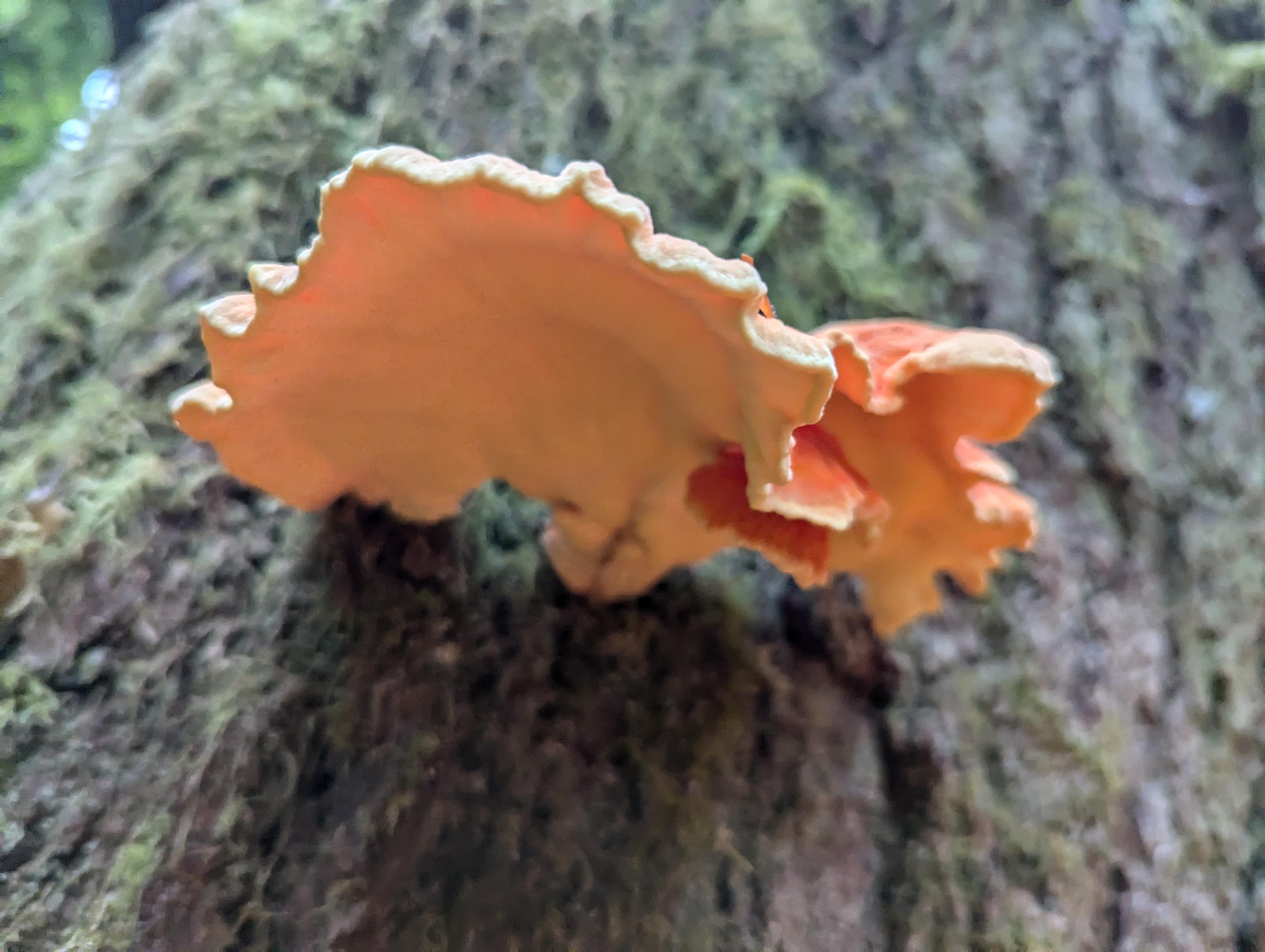
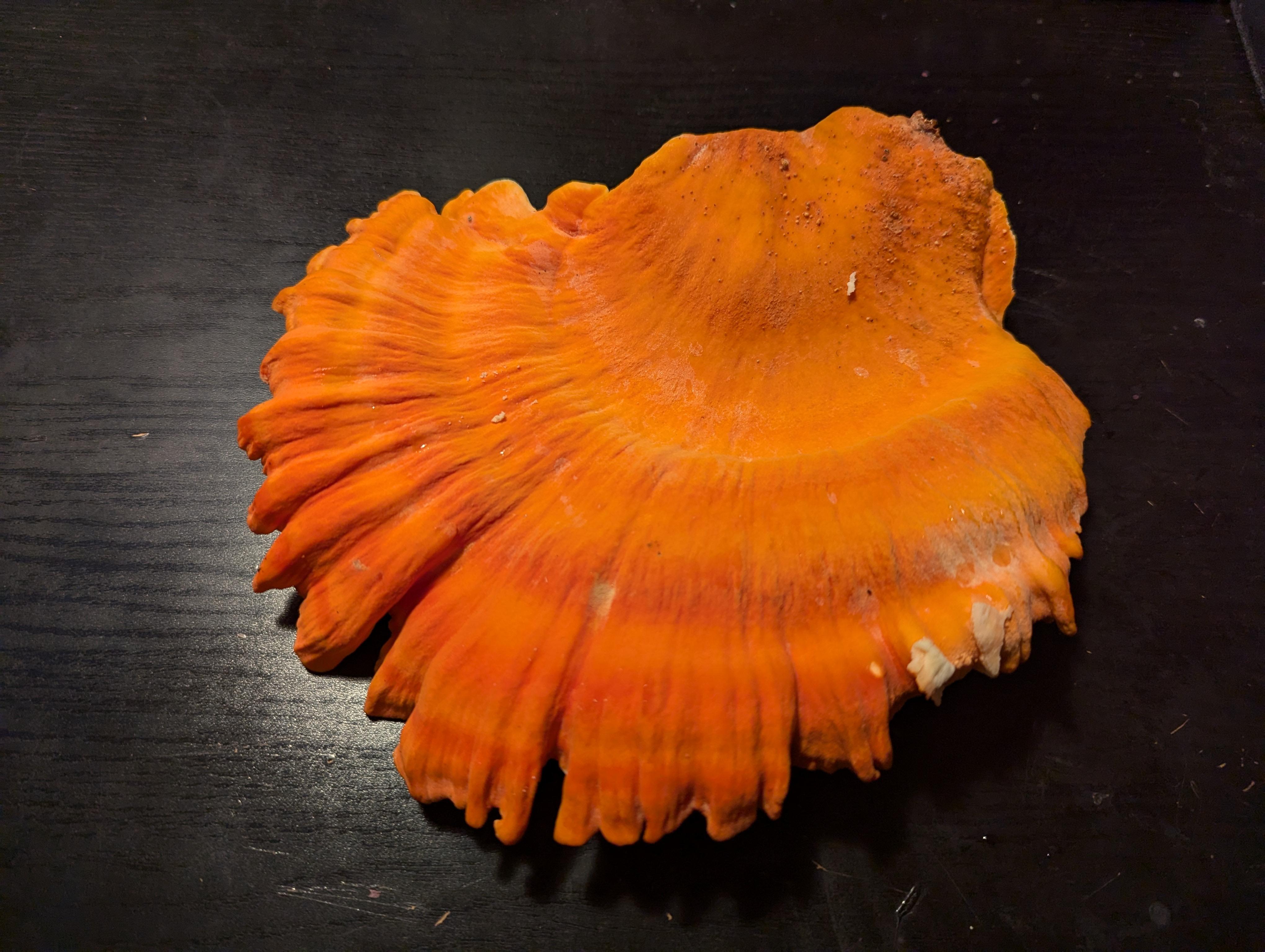
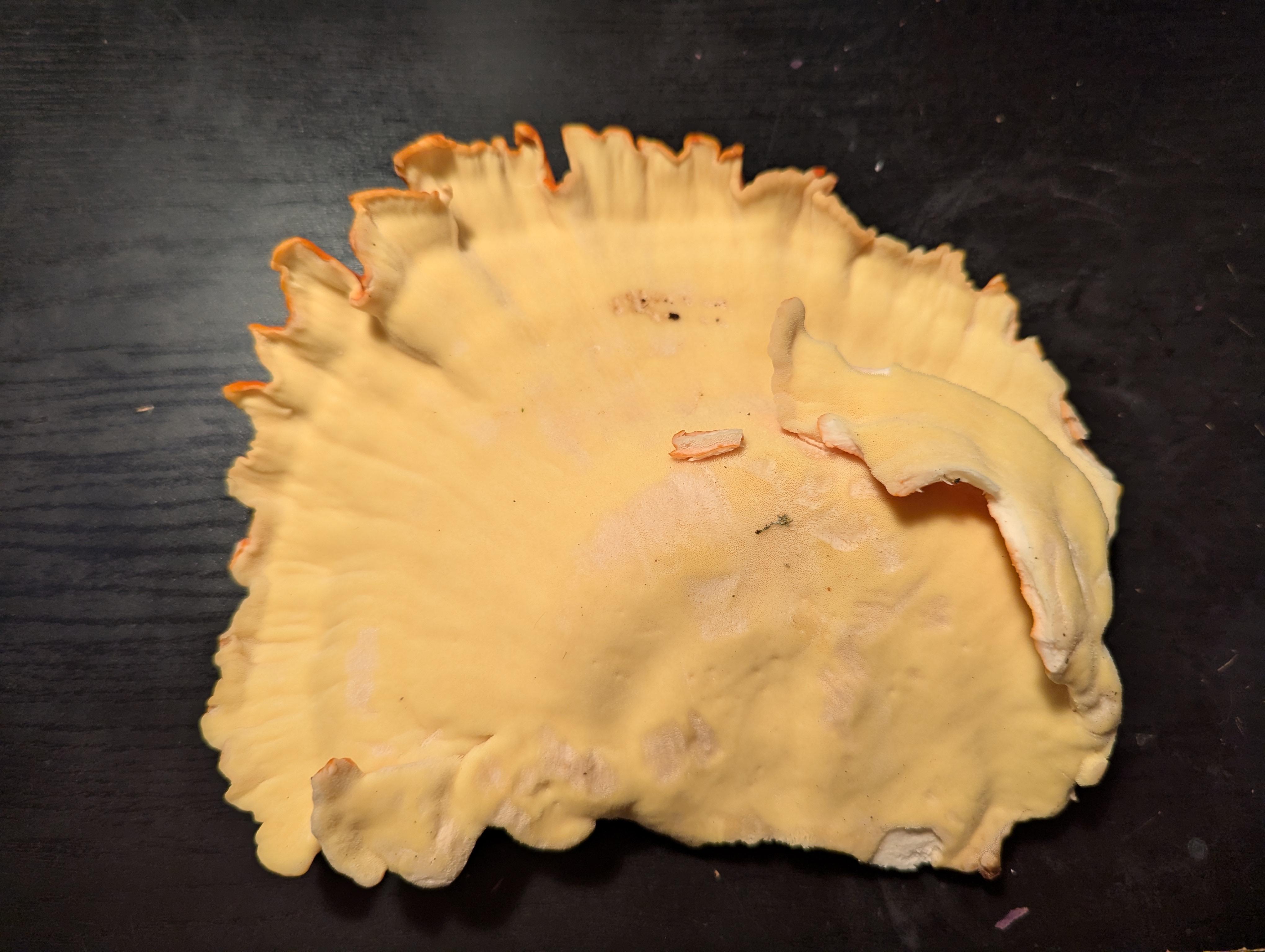
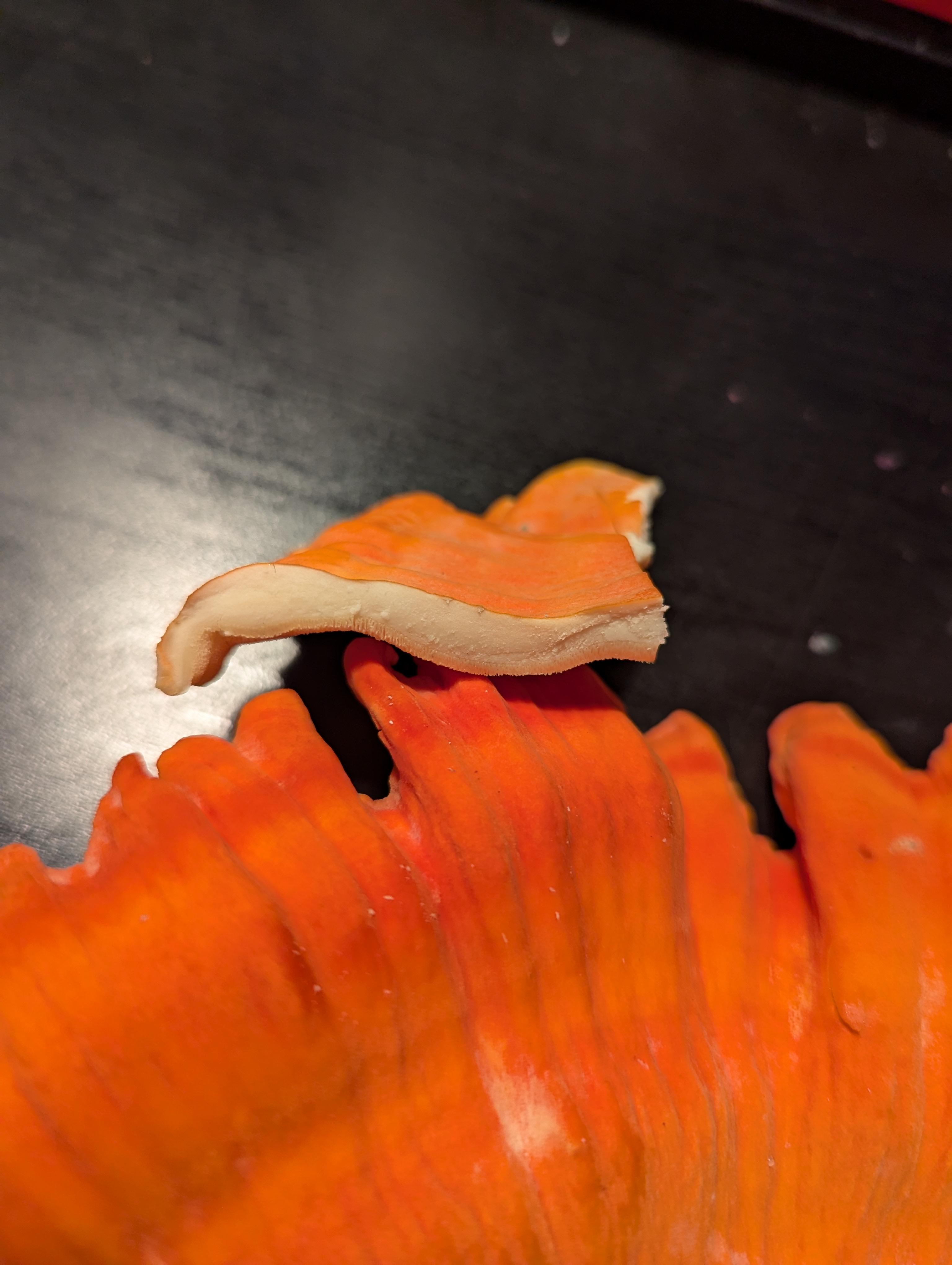
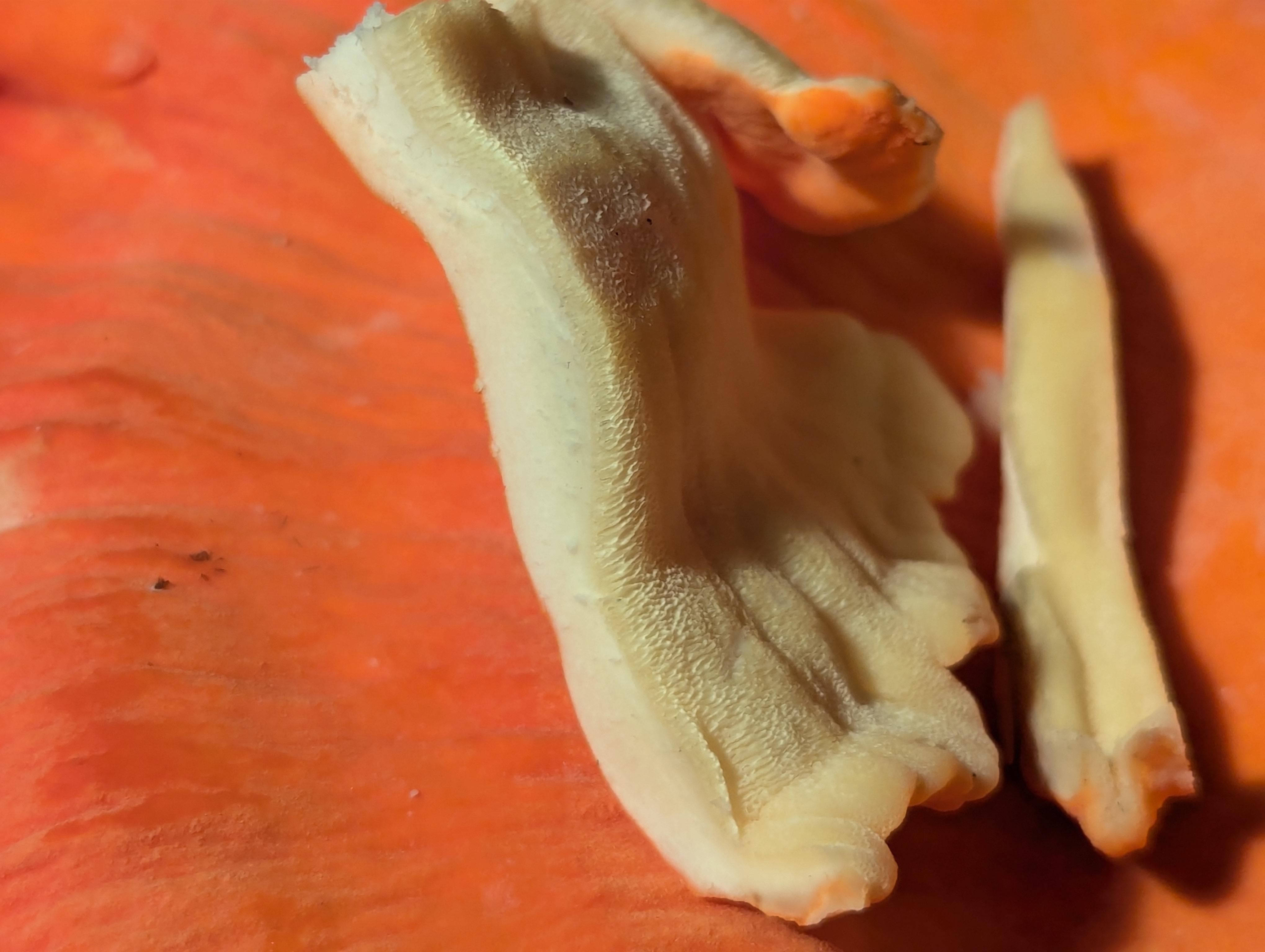
Found in Cascadia/PNW in mid-August.
If it is indeed chicken of the woods (ie laetiporus), I’m curious as to which species.
Cross-posts:





Found in Cascadia/PNW in mid-August.
If it is indeed chicken of the woods (ie laetiporus), I’m curious as to which species.
Cross-posts:
Definitely looks like conifer bark of some sort. Not many non-conifer trees in the pnw.
What is it about conifers that makes the mushrooms not edible?
checked myself and researched it again, seems like it’s just that when people have allergic reactions with them it tends to be when they’ve grown on conifers. my bad! so, it doesn’t make the mushroom not edible, just eat a little bit and wait a day to make sure you don’t have the allergy
It’s a hemlock stump.
See the following source for some extra info: